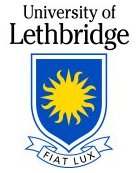Section 3 Outcome standards for Math 1560
¶This page outlines the list of standards each student is expected to achieve in Math 1560. There are five “big themes,” corresponding to the five chapters of the textbook. Each theme comes with several standards you'll be asked to demonstrate by the end of the course. In every class (except test days) and tutorial, you'll be given an opportunity to attempt some of these standards.
A standard is considered mastered if you have:
-
Correctly solved two problems associated with that standard.
- (Minor arithmetic errors are not penalized.)
- Used correct notation throughout your solution.
- Explained your work using complete sentences.
Standards will be graded according to the following scale:
- M: standard has been mastered.
- R: revisions required. This usually means your mathematics is mostly correct, but your writing needs improvement. Once you've fixed your errors, you can resubmit a corrected solution.
- I: there are issues with your solution. This usually means there are significant errors in your mathematics, or the level of writing is not acceptable. You can submit another attempt with a new problem.
- F: you have failed to demonstrate the standard, likely because you have not attempted it.
Note: these standards also serve as your outline for the final exam. For each standard there will be a collection of associated problems. Some subset of these problems (or variants of them) will constitute your final exam.
By the end of the course, you should be able to:
-
Chapter 1: Limits and continuity
- Explain the concept of a limit using graphical and numerical information.
- Apply limit laws in an abstract setting (explicit functions not given).
- Use algebraic manipulation to evaluate limits.
- Evaluate limits involving trigonometric functions.
- Algebraically and graphically determine one-sided limits of piecewise-defined functions.
- Evaluate limits involving infinity and determine asymptotic behaviour of a function.
- Demonstrate continuity of a function using the definition.
- Understand and apply the Intermediate Value Theorem.
-
Chapter 2: Derivatives
- Understand and apply the limit definition of the derivative.
- Understand and apply basic derivative rules (sum, constant, power).
- Calculate derivatives using the product rule.
- Calculate derivatives using the quotient rule.
- Calculate derivatives using the chain rule.
- Symbolically apply derivative rules in an abstract setting (explicit functions not given).
- Use implicit differentiation to compute the equation of a tangent line.
- Compute derivatives using logarithmic differentiation.
- Compute derivatives of trigonometric and inverse trigonometric functions.
-
Chapter 3: Graphical behaviour of functions
- Determine maximum and minimum values of a continuous function on a closed interval.
- State the Mean Value Theorem and apply it to theoretical problems.
- Determine intervals on which a function is increasing/decreasing, and classify critical points.
- Use the second derivative to determine concavity, and understand its significance.
- Produce an accurate sketch of the graph of a function without the use of technology.
-
Chapter 4: Applications of the derivative
- Solve word problems involving related rates of change.
- Solve word problems involving optimization.
- Use linear approximations to estimate function values.
- Compute the Taylor polynomial of a function to a specified degree.
- Quantify the error involved in a Taylor polynomial approximation.
-
Chapter 5: Integration
- Compute antiderivatives and solve initial value problems.
- Understand and apply properties of definite integrals.
- Use a left- or right-endpoint Riemann sum to approximate area under a curve.
- Calculate a definite integral using the Riemann sum definition.
- Use Part I of the FTC to compute derivatives of functions defined as integrals.
- Use Part II of the FTC to evaluate simple definite integrals.
- Use the method of substitution to evaluate definite and indefinite integrals.
- Set up and evaluate a definite integral to compute area between curves.
